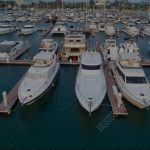 When it comes to buying or selling a boat, having a thorough inspection conducted by a marine surveyor 33462 is crucial. In the State of Florida, Suncoast Marine Surveying is the leading provider of professional marine surveying services. Their team of experienced surveyors specializes in inspecting boats of all sizes and types, ensuring that buyers and sellers have all the necessary information to make informed decisions.
When it comes to buying or selling a boat, having a thorough inspection conducted by a marine surveyor 33462 is crucial. In the State of Florida, Suncoast Marine Surveying is the leading provider of professional marine surveying services. Their team of experienced surveyors specializes in inspecting boats of all sizes and types, ensuring that buyers and sellers have all the necessary information to make informed decisions.
One of the key areas a marine surveyor 33462 focuses on during their inspections is the interior and cabin areas of the boat. These spaces are often overlooked but can reveal important details about the condition of the vessel. Here are some tips on how to ensure a comprehensive inspection of the interior and cabin areas when working with a marine surveyor.
1. Communicate Your Concerns
Before the survey begins, make sure to communicate any specific concerns or areas of focus you have regarding the interior and cabin areas of the boat. Whether it’s water damage, mold, or general wear and tear, sharing this information with your marine surveyor will help them tailor their inspection to address your specific needs.
2. Inspect for Water Damage
Water damage is a common issue in boats, especially in areas like the cabin where leaks can go unnoticed for extended periods. A skilled marine surveyor will thoroughly inspect the interior walls, ceilings, and floors for signs of water intrusion. This includes looking for soft spots, discoloration, and musty odors that may indicate hidden damage.
3. Check for Mold and Mildew
Mold and mildew thrive in damp environments, making boats particularly susceptible to these issues. During the inspection, your marine surveyor should look for visible signs of mold growth in the cabin areas, including on upholstery, curtains, and walls. It’s also essential to check dark and hidden spaces where mold can easily grow unnoticed.
4. Assess Structural Integrity
The structural integrity of the boat’s interior is critical for its overall safety and durability. A comprehensive inspection by a marine surveyor will include checking bulkheads, stringers, and other key structural components for signs of damage or deterioration. Cracks, delamination, and loose fittings are all red flags that should be addressed promptly.
5. Evaluate Electrical Systems
Interior areas of boats often house complex electrical systems that power everything from lighting to appliances. Your marine surveyor should assess the condition of these systems, checking for proper wiring, grounding, and circuit protection. Any signs of corrosion, overheating, or faulty connections should be addressed immediately to prevent potential hazards.
6. Test Heating and Cooling Systems
Proper climate control is essential for comfort onboard a boat, especially in areas with extreme temperatures. During the inspection, your marine surveyor should test the heating and cooling systems in the cabin to ensure they are functioning correctly. Issues such as clogged vents, malfunctioning thermostats, or leaking coolant should be noted for repair.
7. Review Fire Safety Measures
Safety should always be a top priority when inspecting a boat’s interior. Your marine surveyor should review the vessel’s fire safety measures, including the presence of smoke detectors, fire extinguishers, and emergency exits. Additionally, they should check for proper ventilation in enclosed spaces to reduce the risk of carbon monoxide poisoning.
By following these tips and working closely with a qualified marine surveyor in the 33462 area like Suncoast Marine Surveying, you can ensure a comprehensive inspection of your boat’s interior and cabin areas. Remember that a thorough evaluation of these spaces is essential for identifying potential issues and making informed decisions about buying or selling a vessel. Don’t hesitate to contact Suncoast Marine Surveying today to schedule your next marine survey!


